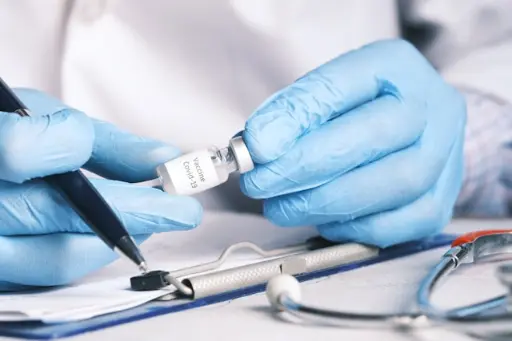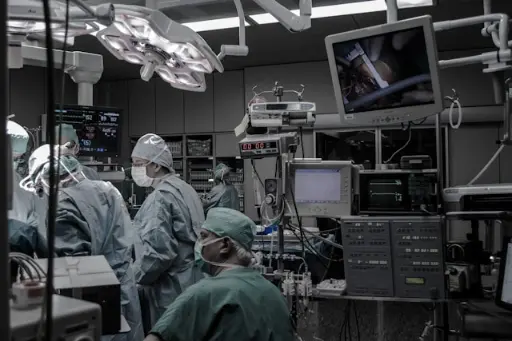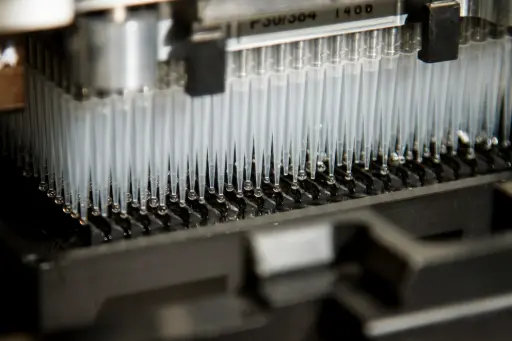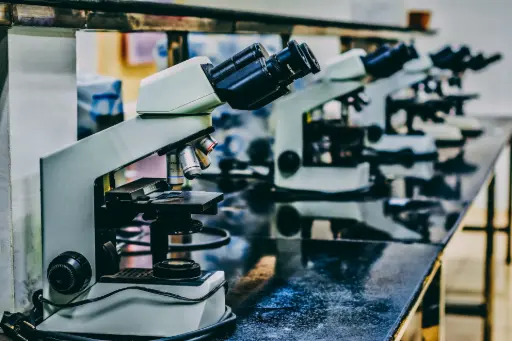— Innovative Life Sciences Ventures —
Value of Innovation with Intellectual Property
Key segments within the field of Innovative Life Sciences
Innovative Life Sciences as a market segment refers to companies focused on the research, development, and application of biological and medical sciences. It encompasses a wide range of sectors that aim to improve human health, agriculture, and the environment. Most innovation in this field strongly relies on intellectual property protections — such as patents — that enable inventors and companies to secure competitive advantage, incentivize investment, and manage technology transfer effectively.
Our key areas of intervention include:
Drug Development

Focuses on R&D and/or commercialization of medical drugs (biologics, small molecules, vaccines, gene therapies…) to treat diseases.
Medical Device

Includes devices for diagnosis, treatment, and monitoring, such as implantable devices, non-implantable tools, and patient-facing wearables.
Diagnostic

Provides tools to detect, monitor, and stratify diseases and conditions, enhancing clinical decision-making and treatment outcomes. Used in human healthcare, veterinary, food safety, and environmental monitoring.
Innovative Supply Industry

Includes tools and technologies that support R&D, formulation, Chemistry, Manufacturing and Control in drug, device and AI for health, agriculture and environmental segments. From bioreactors, bioprocessing, lab automation tools, sterile packaging, and advanced manufacturing systems.
Biotechnology (non drug)

Covers biotechnology applications outside of drug development, such as fermentation-derived, bio-based materials or bio-editing for health, food, agriculture or environmental industrial applications.
Digital Health & Virtual R&D

Exploits AI, intuitive apps, and virtual technologies to accelerate drug discovery and clinical trials. In patient care, these tools enhance access, real-time, remote monitoring, decision-making, treatment adherence, and coordination with caregivers, enabling personalized care and improved healthcare outcomes.
Ambitious aims, extra-demanding ground.
The Innovative Life Sciences sector is crucial to advancements in medicine, healthcare, and public health. It is characterized by extensive research and development (R&D) efforts in cutting-edge, technical domains, often accompanied by significant regulatory considerations. As such, this sector requires considerable time, financial support, seasoned expertise, and a clear focus before achieving revenue-generating outcomes.
Life Sciences is shaped like David vs. Goliath.
Quite oligopolistic at the top with a few dominant players in targeted business and innovative areas generating recurring revenues often from multi-billion-dollar peak sales products and heavily relying on patent protection. This structure naturally develops as capital markets are best suited to players with consistently growing revenues and earnings.
Paradoxically, high risk innovation thrives in scarcity: not enough resources, not enough time. This is how creativity flourishes. This environment calls for a different breed of people, from investment to management-and of course, founders.
Hence, large Life Sciences players source innovation from log scale smaller, nimble players backing R&D with risk capital.
Who’s in for the moon mission?
Most innovation in the Innovative Life Sciences field falls under the category High Growth/High Risk, with drug development being one of the most extreme forms of High Growth / High Risk investment rationale.
Innovative Life Sciences ventures typically access financing at “Cost-of-Capital” in ingenious ways, yet much more expensive than the "Cost-of-Debt". This reflects the nature of the inherent financial risk, specifically, the quite uncertain timeline and likelihood to recapitalization and profits.
Finance gets incredibly creative in funnelling and investing cash in innovative Life Sciences. The profile of investors is also quite diverse, with all degrees of specialization, entrepreneuarial spirit, industrial, finance or philantropic focus, and interest in short to long game. Different profiles will often coexist over time, making each capitalization table unique.
At start, innovative venture teams are mostly R&D-focused, thinking "Bench-to-Market". By the end of the innovation journey, entrepreneurs have gained a wealth of knowledge in Finance, Negotiation, and how to think “Market-to-Bench”. Those who make it through become adamantium-grade entrepreneurs!
Governments often struggle to keep pace with the specific pace and needs of the innovative Life Sciences sector, which are far from the more “traditional” economy. They often fail to recognize the superheros it takes to power and drive innovative Life Sciences venture to success.
Life Sciences innovation, however, is rarely confined to one country. It is a global market -spanning talents, R&D capacity, financing and end markets. IP can offer protection across multiple countries, regulatory standards in key geographies open global entry points, and some stock markets channel capital from all over the world for Life Sciences innovation. On paper, it’s built for reach. In practice, the global opportunity also comes with global exposure. To benefit from it—and stay on top of it—you need to be prepared for the wild. From the Moon, the view is clear. But reaching that vantage point takes more than vision. It takes strong execution, it takes readiness.
Moon mission today
Better tomorrow
This is the drive in the innovative Life Sciences sector. At least where we work. But this drive takes on different meanings in practice:
- First-in-class, new standard, and paradigm shifting innovation
- A handful of believers can make a difference
- Personal achievement
- Financial reward
- The ability to do it again and capitalize on prior success — whether as serial entrepreneurs or by changing roles within the ecosystem (founder, management, board member, investor, general partner...)
Life Sciences is a relatively cash-rich area. In absolute terms, there is ample capital eager to be invested in innovation.
Yet, the matchmaking process between entrepreneurs and investors is an adventure in its own right.
The investor’s lens.
To each type of investor corresponds a specific investment rationale, with market segment focus, asset (and team!) pick philosophy, and a defined risk/reward profile (time horizon, likelihood of return, IRR/ROI). This is not static—it evolves over time, shaped by historical performance, co-existing assets in the portfolio, and an appreciation of emerging trends and risks.
Innovation, however, rarely stems directly from an understanding of this environment or its industrial and financial complexity. The innovative mindset is primarily forward-looking, with a high tolerance for iteration, often paired with a scientific honesty ready to discuss all the possible limitations, flaws, and the utopian ideal of perfect research. Investors think differently—not to say, oppositely.
For most investors, an investment rationale is a calculated bet. Investors are not forward-looking; rather, investors retro-plan. Their resilience to doubt, iteration, and setbacks is limited. The closer they are to market realization, the more constrained their tolerance becomes. This makes investors at the early, stealth-mode stage very different from those in the final stages, just before monetization—whether through an asset/equity deal, IPO, or commercialization. From idea to commercialization, it’s not rare to encounter half a dozen to a dozen financing events.
Life Sciences Innovators are deeply passionate about what they do.
Their highly specialized knowledge make it difficult for counterparts to properly diligence and assess whether these align with what funders, payers and customers are ready adopt and pay for.
This makes communication, controls and transitions notably challenging!
From idea to monetization in Innovative Life Sciences.
In Life Sciences, most innovations change hands at least once. Whether transitioning from academic players to companies, or from small, nimble companies to large corporations with recurring revenues, innovation often changes hands multiple times. These transitions are anything but trivial. Innovation can be rented through licensing agreements or acquired via asset or equity deals. There are various deal structures designed to facilitate the transition of innovation from research to global commercialization. There is no single “best” deal type in absolute terms; instead, certain deal structures are better suited to specific contexts.
Most patent-protected Life Sciences innovation deals involve both upfront and contingent payments. Contingent payments typically include R&D, regulatory, commercial milestones, and royalties. As such, from deal-making to return on investment, it is much more than a handshake—it requires careful planning before and rigorous monitoring after.
For companies pursuing their journey on the stock exchanges, planning and constant monitoring are not limited to deal-making periods; they are ongoing. This is because capital markets are primarily designed and organized around sales-driven businesses that generate recurring revenues, while Life Sciences innovation at the pre- or early-commercial stage is mostly event-driven.
Experience—and a packed innovation graveyard—teaches us that in Life Sciences, the best science in absolute terms is not always the one that crosses the finish line. Great ideas often end up lost in limbo due to poor preparedness for financing, cap table or investor/management mismatches, intellectual property shortcomings, unsuited deal structures, or insufficient diligence and follow-up after deal execution. Science is far from the only risk!
Stage of Readiness Assessment
The innovative Life Sciences field is well-established, with clear milestones across R&D stages and corporate maturity—especially when it comes to funding and deal-making.
Investors, industrial players, experts, and veterans each bring their own criteria to assess the readiness of an asset, which ultimately drive go/no-go decisions. They also know where to push, when and how to pressure-test a venture, challenge a narrative, and leverage their bargaining power.
In this context, readiness is not simply a function of R&D stage. It It is about identifying and addressing the gaps between where a nimble venture stands today and what a strategic or financial player needs to see in a plug-and-play opportunity.
The composition and readiness of the team, the asset story, and the equity story all play a significant role. Cohesiveness is essential to success.

